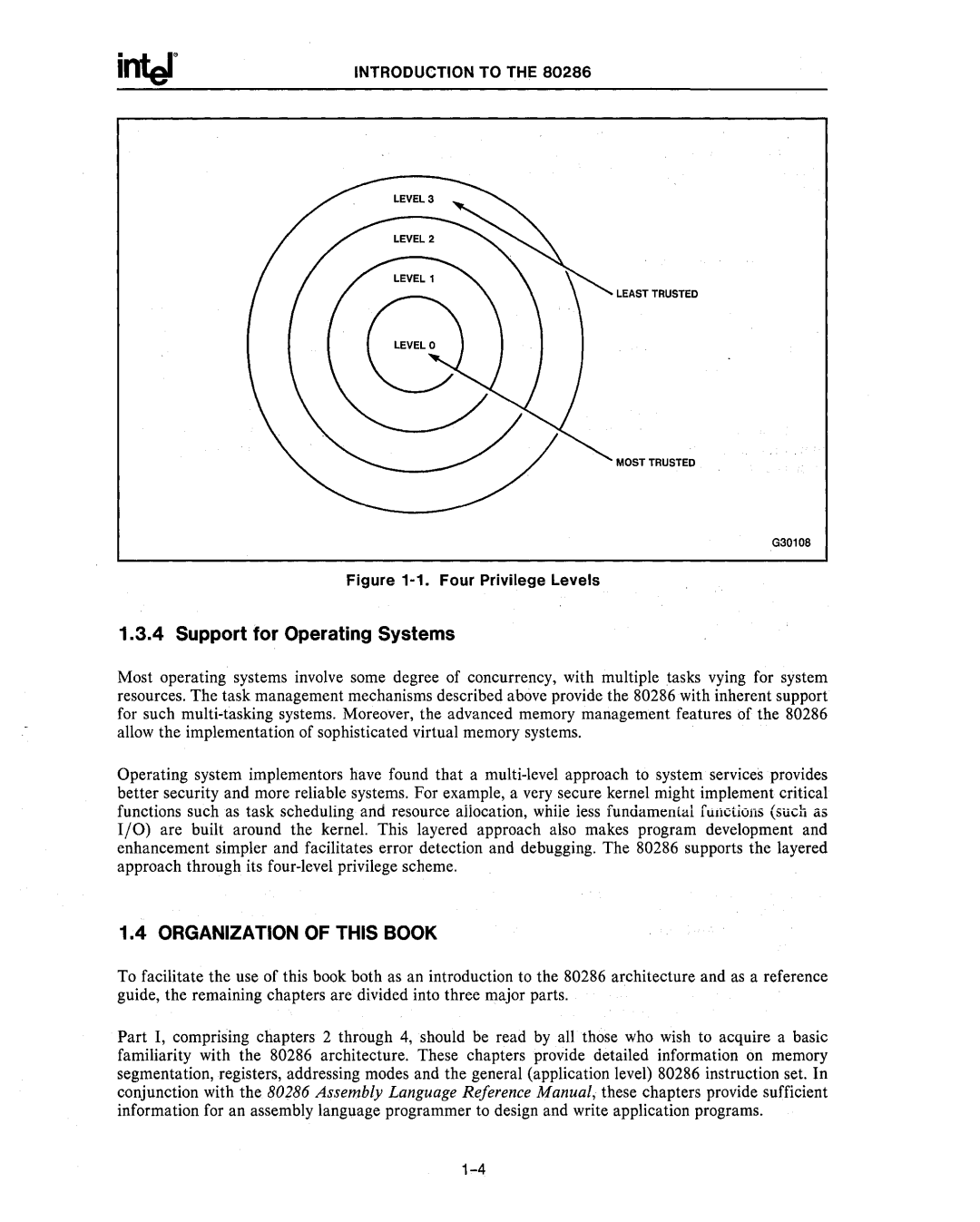
INTRODUCTION TO THE 80286
LEAST TRUSTED
MOST TRUSTED
G30108
Figure 1-1. Four Privilege Levels
1.3.4 Support for Operating Systems
Most operating systems involve some degree of concurrency, with multiple tasks vying for system resources. The task management mechanisms described above provide the 80286 with inherent support for such
Operating system implementors have found that a
1.4 ORGANIZATION OF THIS BOOK
To facilitate the use of this book both as an introduction to the 80286 architecture and as a reference guide, the remaining chapters are divided into three major parts.
Part I, comprising chapters 2 through 4, should be read by all those who wish to acquire a basic familiarity with the 80286 architecture. These chapters provide detailed information on memory segmentation, registers, addressing modes and the general (application level) 80286 instruction set. In conjunction with the 80286 Assembly Language Reference Manual, these chapters provide sufficient information for an assembly language programmer to design and write application programs.
